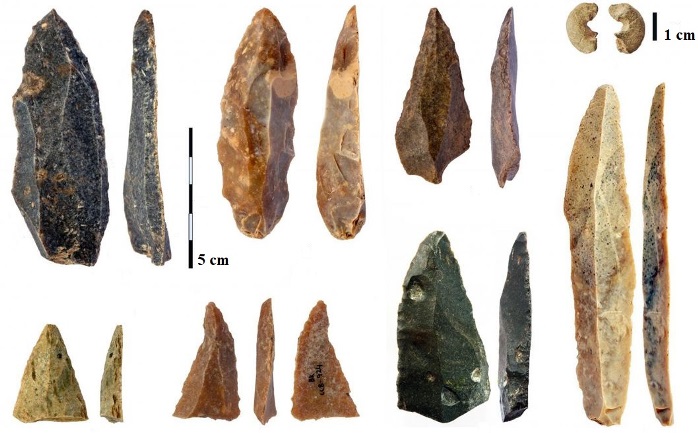The earliest representatives of modern humans—those belonging to Homo sapiens—evolved from more archaic humans approximately 150,000–300,000 years ago in eastern Africa. During succeeding years, the geographical range of anatomically modern humans expanded. In some cases, modern humans may have admixed with local archaic human populations; in other cases, they completely displaced archaic peoples. Then, about 70,000 to 60,000 years ago, H. sapiens dispersed from Africa in significant numbers, first spreading eastward into Asia. However, a portion of the population roamed northward into central Asia and then westward into Europe. Now, investigators in present-day Bulgaria have found the earliest evidence of H. sapiens in Europe, including a fossilized molar, six bone fragments, and various stone tools and ornaments that date back as early as 44,000–46,000 years ago. See also: Anthropology; Archeology; Bone; Dental anthropology; Early modern humans; Europe; Fossil; Physical anthropology; Tooth

The Bacho Kiro cave is located in the Balkan Mountains of central Bulgaria. In the 1970s, researchers conducted excavations in the Bacho Kiro cave, yielding numerous fossils and artifacts assigned to either Neandertals (H. neanderthalensis) or H. sapiens. Unfortunately, those fossils were subsequently lost. Then, in 2015, paleoanthropologists made a number of additional discoveries upon re-excavating this cave. These researchers extracted collagen proteins from the fossilized molar and bone fragments and subjected those proteins to a host of analytical techniques (for example, mass spectrometry) to examine their mitochondrial DNA sequences in order to determine if the material was from humans. Subsequent radiocarbon dating confirmed that, at an estimated age of 44,000–46,000 years old, these remains constitute the oldest known fossil evidence of anatomically modern H. sapiens in Europe. See also: Collagen; Dating methods; Deoxyribonucleic acid (DNA); Mitochondrial DNA; Molecular anthropology; Neandertals; Radiocarbon dating
The researchers also found numerous stone and bone tools, beads, and pendants associated with the fossilized bones and molar. Some pendants were carved from cave bear teeth. Analyses again confirmed the date of these finds to be approximately 44,000–46,000 years old. However, investigators cannot definitively conclude that H. sapiens members created these ornaments and tools. It is possible that the artifacts were fabricated by Neandertals. In general, Neandertals did not constitute a primitive culture. On the contrary, Neandertal culture was often relatively sophisticated, and Neandertals were capable of making tools and ornamental jewelry similar to those found in the cave. Some paleontologists even suggest that the initial H. sapiens population that moved into Europe may have learned tool-manufacturing techniques directly from Neandertals. As the presence of Neandertals likely continued until at least approximately 40,000 years ago, the exact originators—whether H. sapiens or Neandertals—of the tools and pendants found in the cave remain a mystery. See also: Earliest tools; Origins of symbolic behavior; Prehistoric technology





